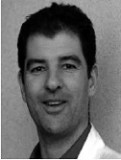HealthManagement, Volume 2 - Issue 2, Winter 2008
Why was it Decided to Set Up a Heart Failure Clinic at the UZ Middelheim?
This hospital is a university affiliated facility with a large
interventional cardiovascular programme of more than 4,000 diagnostic coronary
angiograms, and more than 2,000 PCIs per year. Over the years, improved
prognosis of acute coronary syndromes has led to an increased burden of chronic
heart failure. The older age of the heart failure population, their co-morbidities
and the rapidly evolving therapeutic opportunities in heart failure have urged
to add a specialised programme of ambulant care in the cardiovascular division.
Cardiac rehabilitation, organised optimisation of medical therapy, and
evidence-based selection for “advanced device therapies” were the predefined goals
of this heart failure clinic.
Please Describe the Activities of the Centre.
The centre combines a heart failure clinic and cardiac rehabilitation centre, situated on the ground floor of the hospital. Themultidisciplinary para-medical teamincludes physiotherapists, a psychologist, asocial nurse, a dietician, and a heart failurenurse and is led by two non-interventionalcardiologists. Apart from a large fitnessroom, the centre has room for “semi-open door”ambulatory patient visits, echo-Doppler imaging, and cardio-pulmonaryexercise testing. The “semi-open door”service provides medical consultation byappointment, and guarantees consultationwithin 24 hours in case of increased complaints.A heart failure nurse can be reachedby telephone daily from 8 AM – 4 PM.Serum analyses are performed one hourbefore a patient’s visit, with results availableduring the consultation. Heart failureteaching is given by the heart failure nurse.Yearly, about 1,500 ambulatory heartfailure visits are performed. A quarter ofthese visits consist of a combined assessmentby cardiologist and nephrologistallowing dual analysis of patients withcombined heart and kidney failure. Inparallel with this, more than 400 patientsper year complete a 4 - 6 month cardiacrehabilitation programme.
How was the Project Budgeted for, and How is it Funded?
The clinic’s multidisciplinary team is funded by the profits from
the cardiac rehabilitation activities, although this does not cover the whole
budget. Most multidisciplinary heart failure clinics, therefore, are part of a
larger “tertiary” cardiovascular division. This is not an ideal situation,
since there is a greater need for heart failure clinics than tertiary cardiovascular
divisions.
How did You Decide to Assign Roles Within the Centre? Were There Any Issues in Dividing up Work for Nurses, Physicians, Etc.?
Some heart failure clinics in other countries are “nurse-led”, but
ours is physicianled as nurses in Belgium are not allowed to take final medical
responsibility. The heart failure nurse promotes accessibility, should enjoy
the patient’s confidence, teaches them how to live with heart failure, and is
the first person to contact in case of problems or questions. Medical decisions
are always made or approved by the heart failure cardiologist. Despite this, a
heart failure nurse is a “sine qua non” to organise a heart failure clinic. The
heart failure nurse increases accessibility to the clinic, has a central position
in recruiting patients from the ward to the clinic, provides in and out hospital
heart failure teaching.
How are Referrals Made to the Centre?
Most patients in the clinic have been referred following
hospitalisation for acute heart failure. Thus, our patients have more advanced
disease, and are at high risk for re-hospitalisation. During follow-up of these
patients, we carefully respect written communication with the primary care physician
by sending clinical reports immediately following an ambulatory visit. Also,
patients receive a heart failure diary, in which body parameters like blood pressure,
body weight, and medication can be noted by patient and care provider.
What Were Your Most Significant Challenges ?
The three most important hurdles were:
- To convince colleagues within the division to invest in a heart failure nurse and a multidisciplinary team;
- To find space for the clinic in the hospital, that is easily accessible for older patients and,
- To convince colleagues that advanced heart failure patients should be followed in a heart failure clinic, rather than in a private practice.
Once started, the last one is the toughest. Patients with heart
failure usually have a long cardiological history and often have been followed
throughout outside the heart failure clinic before. Long-standing
physician-patient relationships are not given up easily.
How do You Ensure That You are Working in Tandem With Primary Care Physicians?
Since our heart failure population has advanced disease, often
with co-morbidities like kidney failure, primary care physicians do not feel
threatened. Most primary physicians are reluctant to change medications once
heart failure is advanced, devices are implanted or kidney failure is present.
Also, the number of patients with advanced heart failure per primary care
physician represents only a fraction of their total clientele. They don’t mind
that these patients, often with poor life expectancy, receive specialised and advanced
care.
What is Your Advice to Other Heart Failure Clinic Directors?
- Provide post-hospitalisation visits within two weeks of discharge. Re-hospitalisation rates are highest then, and often medications need adjustment because of hypotension, fluid imbalances, etc.
- Find a well-trained and dedicated heart failure nurse to built a relationship of trust with patients and to offer daily telephone assistance. She will absorb many smaller problems at an early stage before things escalate.
- Collaborate with a nephrologist that has a feeling for haemo dynamics.
- Motivate your patients for cardiac rehabilitation. It can drastically improve your patient’s quality of life.
How do You Manage Patient Data? What Sort of IT Infrastructure is in Operation?
We keep electronic files, making them permanently visible and accessible to all medical providers in the hospital. Currently, we are involved in a project that provides website-based files, and in which brief notes by general practitioners and the heart failure clinic can be left – an elegant way of communication. When this approach is combined with telemonitoring of heart failure symptoms and some physiological parameters, that trigger warning emails to GP and clinic when abnormal, a true interdisciplinary collaboration arises that has a good chance to reduce unnecessary hospitalisations.






